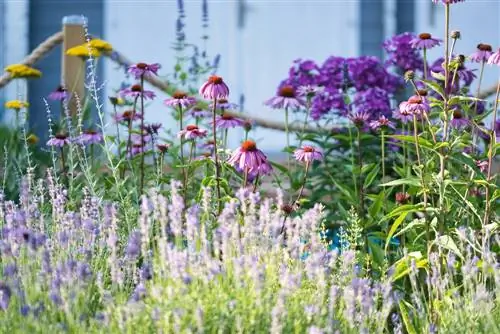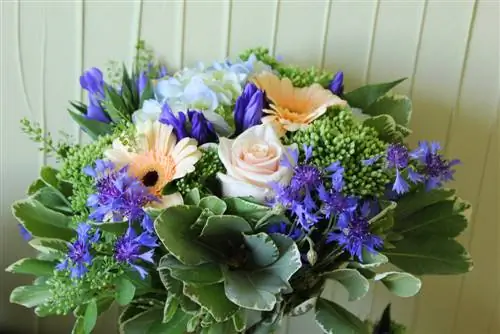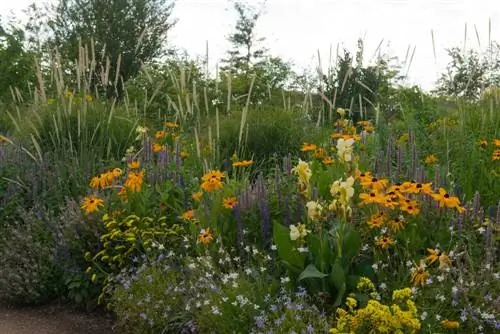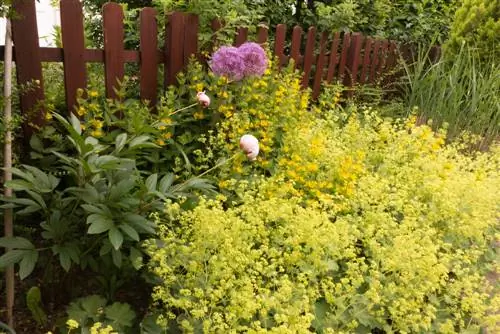- Author admin [email protected].
- Public 2023-12-16 16:46.
- Last modified 2025-01-23 11:22.
The fuchsia (also called fuchsia) originally comes from Peruvian mountain forests and is an extremely popular flowering plant for balconies, terraces and gardens in this country. Below you will find out how and with which companion plants you can show it off to its extraordinary advantage.
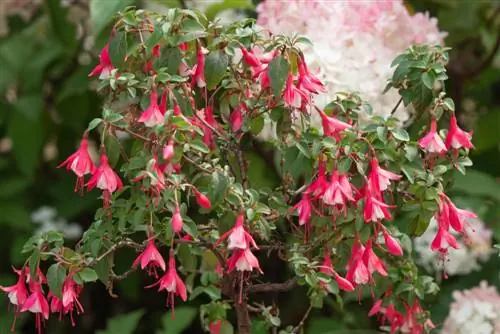
How can you combine fuchsias optimally with other plants?
Fuchsias can be ideally combined with plants that prefer similar site conditions, such as partially shaded places and slightly moist substrate. Suitable companion plants include columbines, ornamental alliums, bush daisies, hostas, morning glories, noble lilies, begonias and hydrangeas.
What factors should you consider when combining fuchsias?
In order to emphasize the character of fuchsias, these factors should be taken into account when looking for suitable combination partners:
- Flower color: white, pink, red or purple (often multicolored)
- Flowering time: March to October
- Location requirements: partially shaded, slightly moist and permeable substrate
- Growth height: up to 120 cm
The fuchsia's long flowering period makes it easy to find plants that display their flowers at the same time as it. However, you should first consider whether the respective flower colors match each other. Create a uniform and rather calm image or a play of contrasts.
Suitable planting partners for the fuchsia should also feel comfortable in a partially shaded location. Drought-loving plants are less predestined for a combination due to fuchsia's preference for a moist substrate.
Also consider the growth height the fuchsia needs to achieve when choosing companion plants.
Combine fuchsias in the bed or in the pot
The fuchsia flowers are almost reminiscent of floating fairies when they hang down from the branches and attract attention with their intense colors. You can enhance this color effect in the background with larger foliage perennials. But a combination with flowering plants is also worthwhile. Depending on the flower color, the fuchsia can be wonderfully combined with columbines, morning glories and the like.
Impressive combinations are created with:
- Aquilegia
- ornamental onion
- bush daisies
- Funkia
- Morning glories
- Edellieschen
- Begonias
- hydrangeas
Combine fuchsia with hosta
The hosta doesn't like the blazing sun any more than the fuchsia. They both love a typical forest flair and can support each other's visual representation. For example, plant red-purple fuchsias about 1 m away from green-white hostas. A fantastic duo!
Combine fuchsia with hydrangea
The hydrangeas tend to grow larger than most fuchsias. Only the large fuchsias should be placed behind the hydrangeas. The other species have an absolutely intoxicating effect on hydrangeas, especially when they are in bloom. Dark garden areas receive visibly more light and life with these two.
Combine fuchsia with noble lilies
You can marvel at a wonderful symphony of colors if you put a red to pink fuchsia in a pot with a noble lily that blooms in the same color. From summer to autumn, the plants stand together in their blooms and feel at home when they are in a place facing away from the sun.
Combine fuchsias as a bouquet in the vase
The slightly overhanging inflorescences of fuchsias can add a certain charm to bouquets. They look harmonious in a bouquet with, for example, purple or pink columbines. Combined with daisies, dahlias or roses, the fuchsias balance out the rather pompous image and give it a bit of filigree. Ferns and grasses make the bouquet appear noticeably more natural.
- Daisies
- Roses
- Aquilegia
- Ferns such as ostrich fern and sickle fern
- Dahlias
- Zinnias
- Grasses such as feather grass and riding grass


